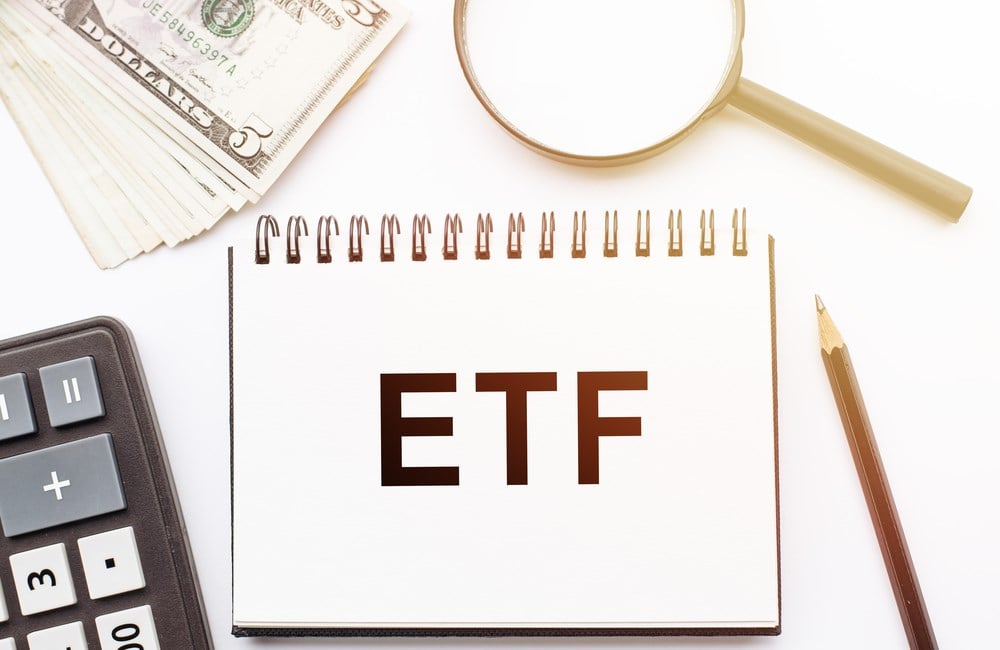3 Low-Cost ETFs That Are Crushing SPY

Resilient American consumers. Below normal valuations. Moderating inflation. Artificial intelligence. They're all adding up to a fantastic 2023 for U.S. equities.
Interestingly, this year’s rally has been a bit of a self-fulfilling prophecy. Rising stock prices are prompting investors to pour more money into individual stocks, mutual funds and exchange traded funds (ETFs). In the second quarter of 2023, domestic equity ETFs hauled in $96 billion compared to just $28 billion in the first quarter. Since fund inflows are synonymous with buying, they helped push the market to new highs at the end of Q2.
This begs the question — are recent fund flows consistent with improved market fundamentals? Or is it a performance-chasing phenomenon at hand?
With much uncertainty around prices and the path of interest rates, it’s difficult to say which is more likely. Those who subscribe to the efficient market hypothesis would say the market has priced stocks appropriately. A glance at lofty tech stock valuations reminiscent of the dot com bubble suggests otherwise.
What we do know is that money is flowing into a wider range of funds than in years past. The continuous launch of new ETFs is giving investors more choices than ever before. In turn, the biggest funds aren’t necessarily getting bigger.
Take the popular SPDR S 500 ETF, better known as SPY. While it boasts more assets under management (AUM) than any other ETF, net flows are actually down $1.8 billion this year. If flows were positive, the fund’s 18% year-to-date return may be even higher.
Instead, investors are discovering other sub-asset classes and specialty funds in which to allocate their money. As a result of this and other market divergences, these three ETFs are significantly outperforming SPY in 2023.
#1 - SCHG (+39%)
The Schwab U.S. Large-Cap Growth ETF (NYSEARCA: SCHG) is killing it this year mainly because the growth style of investing is vastly outperforming its value counterpart. To the fund’s credit though, it is capitalizing on the disparity better than most peers. Up 39% year-to-date, SCHG is a top decile performer among nearly 1,200 U.S. large-cap growth funds. In contrast to SPY’s 2023 net outflows, SCHG's net flows are a positive $1.0 billion.
Granted, more than doubling the return of the S&P 500 has much to do with sector and stock representation. Technology, this year’s best-performing economic group, accounts for roughly 45% of SCHG compared to 29% for SPY. Apple and Microsoft, both of which are up more than 35% this year, have a combined 25% weighting in SCHG versus 14% in SPY. Higher weights in Amazon, Alphabet and the S 500’s biggest winner, NVIDIA, are also responsible for the outperformance — and ensuing investor interest.
#2 - FLJH (+33%)
Looking outside the U.S., The Franklin FTSE Japan Hedged ETF (NYSEARCA:FLJH) is quietly having an excellent year. The Japan-focused equity fund is up 31%, on pace for its best calendar year yet after launching in 2018. The country’s primary index, the Nikkei 225, has surged past the 30,000 mark for the first time in 33 years thanks to structural changes years in the making. Japanese corporations are becoming more employee- and shareholder-friendly by implementing worker raises, forming more diverse boards and buying back stock. These moves are making for a healthier economy and attracting investors to an asset class long perceived as too risky.
And yet, with the Nikkei still about 15% below its 1989 record high, it may not be too late to hop on the bandwagon. A good vehicle for doing so is FLJH because of 1) its five-year outperformance in the Japanese stock category and 2) its ability to minimize the impact of Yen-U.S. dollar exchange rate volatility through hedging mechanisms. The diversified fund’s low 0.09% expense ratio is more reason to venture out east.
#3 - ESGV (+21%)
Those who thought environmental, social and governance (ESG) investing was a 2019 fad should check out The Vanguard ESG U.S. Stock ETF (BATS: ESGV). The fund is up 21% this year and closing on a new all-time high. It is not only outpacing SPY but also 90% of all U.S. large-cap funds. Its 0.09% expense ratio matches that of SPY, but it has a lower forward dividend yield (1.1% versus 1.5%).
What’s compelling about ESGV is that it includes a mix of large, mid and small cap companies, whereas SPY is exclusively large cap. Companies that meet various ESG criteria as defined by the United National Global Compact Principles make their way into the fund while the rest are screened out. The result is an approximately 1,500 stock portfolio that, interestingly, has a higher technology weighting (35%) than SPY, hence the outperformance. This makes ESGV a unique way to gain exposure to three times as many domestic stocks and ESG dynamics while having a significant tech bet all at the same time.
Source MarketBeat
Alphabet Inc. A Aktie
Die Alphabet Inc. A Aktie in der Gunst der Community: Nur Buy-Einschätzungen, keine Sell-Einschätzungen.
Ein positives Kurspotenzial für Alphabet Inc. A ist gegeben, mit einem Kursziel von 180 € über dem aktuellen Kurs von 151.22 €.




